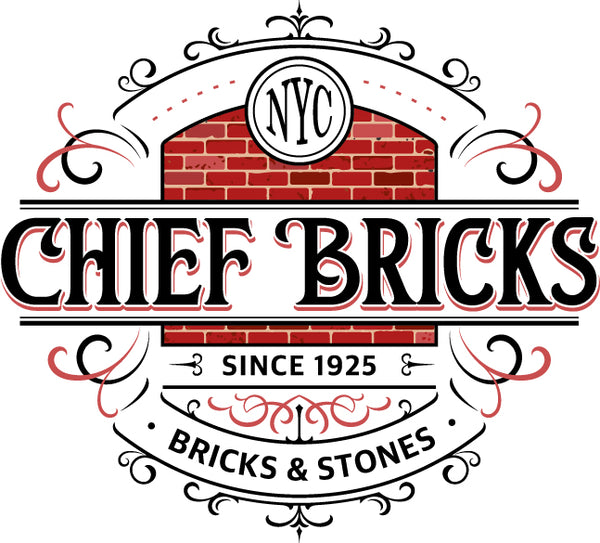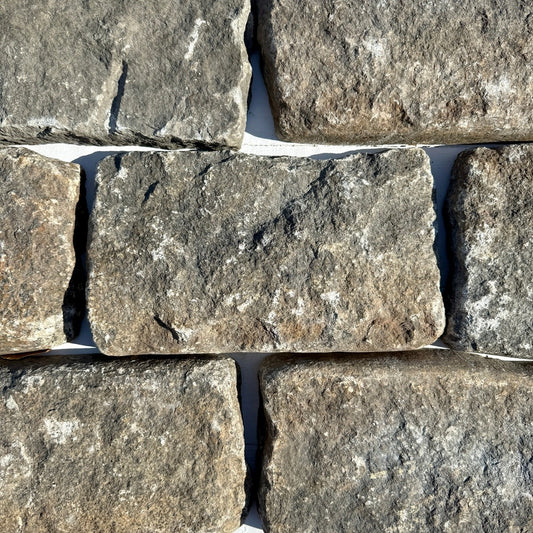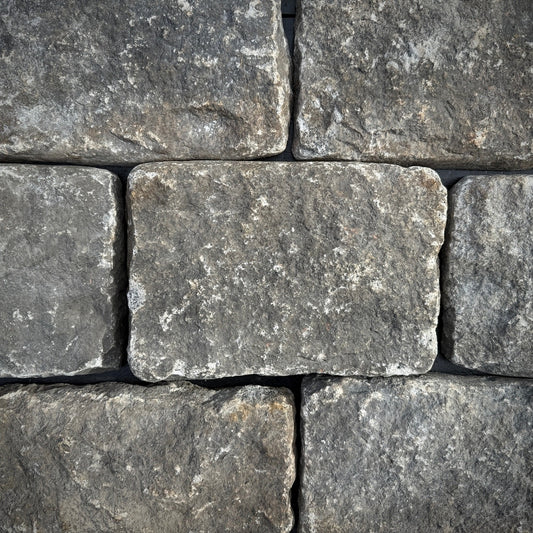You've probably seen those beautiful stone homes and thought that look was out of reach. The classic, rugged appearance of building stone feels timeless and solid. But the cost and structural work of traditional masonry can be a huge barrier.
This is where thin stone veneer comes into the picture, completely changing the game. Getting that dream look is much more attainable than you might think. A material like thin stone veneer gives you all the beauty of natural stone without the weight or the massive price tag.
You get a finished project that looks just like the real deal, because it often is real stone, just sliced thin. This guide will walk you through everything you need to know about this amazing material.
Table Of Contents:
- What Exactly Is Thin Stone Veneer?
- The Big Decision: Natural Stone vs. Manufactured Stone
- Exploring Popular Thin Stone Veneer Styles
- Why You'll Love Having Thin Stone Veneer in Your Home
- Putting It All Together: Installation Basics
- How Much Does This Project Really Cost?
- Choosing a Supplier for Your Project
- Conclusion
What Exactly Is Thin Stone Veneer?
So, what is this stuff? Think of it as a lighter version of a full-sized stone block. Thin stone veneer is a lightweight siding material made from either real quarried stone or a manufactured concrete mixture.
The key is its thickness, which is usually around one to one and a half inches. This thin profile means it weighs significantly less than its full-bed counterpart, typically under 15 pounds per square foot. According to the Natural Stone Institute, this weight difference is a big deal for how and where you can use the veneer stone.
Because it's so light, you can apply it directly to many wall surfaces without needing a special foundation or structural support ledge. This opens up many possibilities for both inside and outside your home, from an accent wall to a full exterior remodel. It's the secret to getting a convincing building stone veneer finish without the engineering headache.
The Big Decision: Natural Stone vs. Manufactured Stone
When you start looking at options, you will see two main categories: natural and manufactured. They both look great, but they have some important differences. Choosing the right one depends on your budget, your project, and the look you want to achieve.
Natural Thin Stone
This is the real thing, often called real stone veneer. Natural thin stone is quarried directly from the earth and then sliced into thin profiles. Each piece of this real natural stone is completely one-of-a-kind, featuring natural color variations and textures.
The colors are authentic because they were created by nature over millions of years. It's incredibly durable and stands up to weather beautifully, keeping its stone color for a lifetime. Premium natural stone is heavier and generally costs more than the manufactured version.
Manufactured Thin Stone (Cultured Stone)
Also known as cultured stone, this product is man-made. It starts with a concrete mixture that's poured into molds and colored with pigments to look like real stone. The molds are often made from actual stones, so the textures can be very convincing.
Manufactured stone is lighter than natural stone and usually less expensive. But since it's a concrete product with surface-level pigments, the color often fades over years of exposure to sun and rain. If a piece chips, you might see the gray concrete color underneath.
Here is a quick comparison to help you see the differences side by side.
| Feature | Natural Stone Veneer | Manufactured Stone Veneer |
|---|---|---|
| Source | Quarried from the earth | Concrete mix in molds |
| Appearance | Authentic, varied stone color | Consistent, repeating patterns |
| Weight | Heavier (10-15 lbs/sq ft) | Lighter (6-10 lbs/sq ft) |
| Cost | Higher | Lower |
| Durability | Extremely durable, colorfast | Durable, but color may fade over time |
| Color Integrity | Color runs through the entire stone | Color is only on the surface |
| Eco-Friendliness | Natural, but requires quarrying | Often contains recycled content |
Exploring Popular Thin Stone Veneer Styles
The style of stone you choose dramatically impacts the final look of your project. From rustic to modern, there is a cut and style for every design preference. Here are some of the most popular options you will find.
Ledgestone
Ledgestone features small, rectangular strips of stone arranged in linear patterns. This style creates a textured, stacked appearance that adds a lot of visual interest and dimension. It's a popular choice for a fireplace surround or a feature wall inside your living space.
Fieldstone
Fieldstone offers a rustic and natural look with its irregular shapes and sizes. These stones look as if they were collected from a field, giving projects an organic and timeless feel. This style works wonderfully for home exteriors, garden walls, and grand fireplaces.
Ashlar
The Ashlar style consists of rectangular stones that have been cut into specific heights. They are arranged in a pattern that creates a more formal and structured appearance than Fieldstone. This classic look is great for both traditional and contemporary designs.
Mosaic or Webwall
Mosaic, also known as webwall, uses irregular, angular pieces of stone fitted together like a puzzle. This creates a unique and intricate pattern that is full of character. It's an excellent choice for making a bold statement in any application.
Reclaimed Jumbo Cobblestone *new*
Introduced by Chief Bricks, the Jumbo Cobblestone Veneer is the first thin wall veneer crafted from Reclaimed Jumbo Belgian Blocks once used on historic New York streets. Each piece is sawn to a uniform thickness, preserving the authentic split faces and natural patina of centuries-old granite. The result is a bold, timeless look that combines the durability of cobblestone with the refined texture of modern stone veneer, perfect for walls, fireplaces, and architectural accents that celebrate true heritage.
Why You'll Love Having Thin Stone Veneer in Your Home
So why do people choose stone veneers for their homes? The benefits are pretty clear once you look at them. It's about getting a high-end look in a smarter, more efficient way.
- It Saves You Money. Let's be honest, budget is a big deal. Both the materials and the labor for a stone veneer project cost significantly less than for full-bed stone. You can get that million-dollar look without the matching price tag.
- It Goes Almost Anywhere. Have you thought about an interior feature wall or a fireplace surround? Because it is so light, you can add it to interior walls, exterior siding, chimneys, and outdoor living areas. You are not limited by structural requirements in your living space.
- The Install Is Easier. You do not need a concrete footing to support the weight of the stone. This simplifies the whole building process. Home improvement experts at This Old House show it can attach to many different wall types, from plywood sheathing to concrete block.
- Boost Your Home's Value. Curb appeal is a real thing. Adding stone to your home's exterior is a proven way to increase its value and make it stand out. A report from Remodeling Magazine often shows high returns on investment for projects featuring natural stone.
Putting It All Together: Installation Basics
While it's simpler than full masonry, installing thin stone veneer still needs care and attention to detail. It might be a job for a skilled DIYer, but for a large project, hiring a professional is a good idea. Here is a quick rundown of the steps involved.
- Get the Surface Ready. The wall needs to be clean, dry, and solid. The process starts by attaching a moisture barrier, followed by metal lath which acts as a skeleton to hold the mortar. This step is vital for the longevity of your stone veneer wall.
- Apply the Scratch Coat. A layer of mortar is applied over the metal lath and then "scratched" with a tool to create horizontal grooves. This rough surface provides a strong mechanical bond that helps the stones stick better. The scratch coat needs to cure for at least 24 to 48 hours before you can move on.
- Start Laying the Stone. This is the fun part where you see the wall come to life. Before you start, lay out your stones on the ground to plan your design and create a custom blend of shapes and colors. You'll "butter" the back of each stone with mortar and press it firmly onto the wall with a slight wiggling motion to set it. Most people start at the bottom corners and work their way up.
- Fill in the Gaps. After the stones are set, you have to fill the joints between them with grout. You can choose a traditional grouted look or a tight "dry-stack" appearance with very little visible mortar. This choice makes a huge impact on the final style of your real natural stone project.
- Clean and Seal. The last step is to clean off any excess mortar from the stone faces using a stiff brush and water. Depending on the type of stone and where it's installed, applying a sealant can help protect it from moisture and stains. This is especially important for outdoor living applications.
This process ensures your new wall of stone is not only beautiful but also built to last. A proper installation is everything.
How Much Does This Project Really Cost?
You are probably wondering about the bottom line. The cost of a thin stone veneer project breaks down into materials and labor. The numbers can change a lot depending on where you live in the USA and the premium natural stone veneers you pick.
Material costs for manufactured stone typically run from about $5 to $25 per square foot. If you want natural thin stone, expect to pay more, somewhere between $8 and $40 per square foot, and sometimes even higher for rare types. This is just for the stone itself; you also have to factor in mortar, lath, and other supplies.
Labor is the other big part of the equation. Professional installation usually adds another $15 to $30 per square foot. This includes all the prep work, setting the stone, and grouting. So, for a professionally installed project, you are looking at a wide range, but it gives you a ballpark idea of what to expect.
Choosing a Supplier for Your Project
Finding the right supplier is an important step in your project's success. Look for a company with a good reputation and a wide selection of natural stone veneers. A good supplier can offer expert advice on which building stone is right for your climate and design.
Always request samples before making a final decision. Photos online can be misleading, and seeing the real stone helps you appreciate its true stone color and texture.
Don't forget to ask about shipping policies, as some companies offer free shipping on large orders, which can lead to significant savings.
Conclusion
Giving your home a stone facelift is an exciting prospect. It adds character, strength, and a connection to the natural world. In the past, this was a massive undertaking, but materials have evolved.
With thin stone veneer, that classic beauty is within reach for more people than ever. It is a versatile, smart material that delivers a stunning visual punch. You can find options across the USA from various suppliers to match any style you desire.
Whether you are updating your fireplace, adding a feature wall, or transforming your home's exterior, a stone veneer project offers a path to get the beautiful results you want. This durable and attractive material is a fantastic investment in your home's future.




